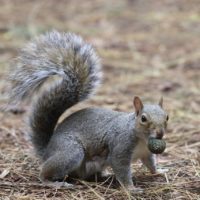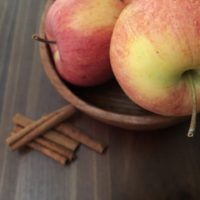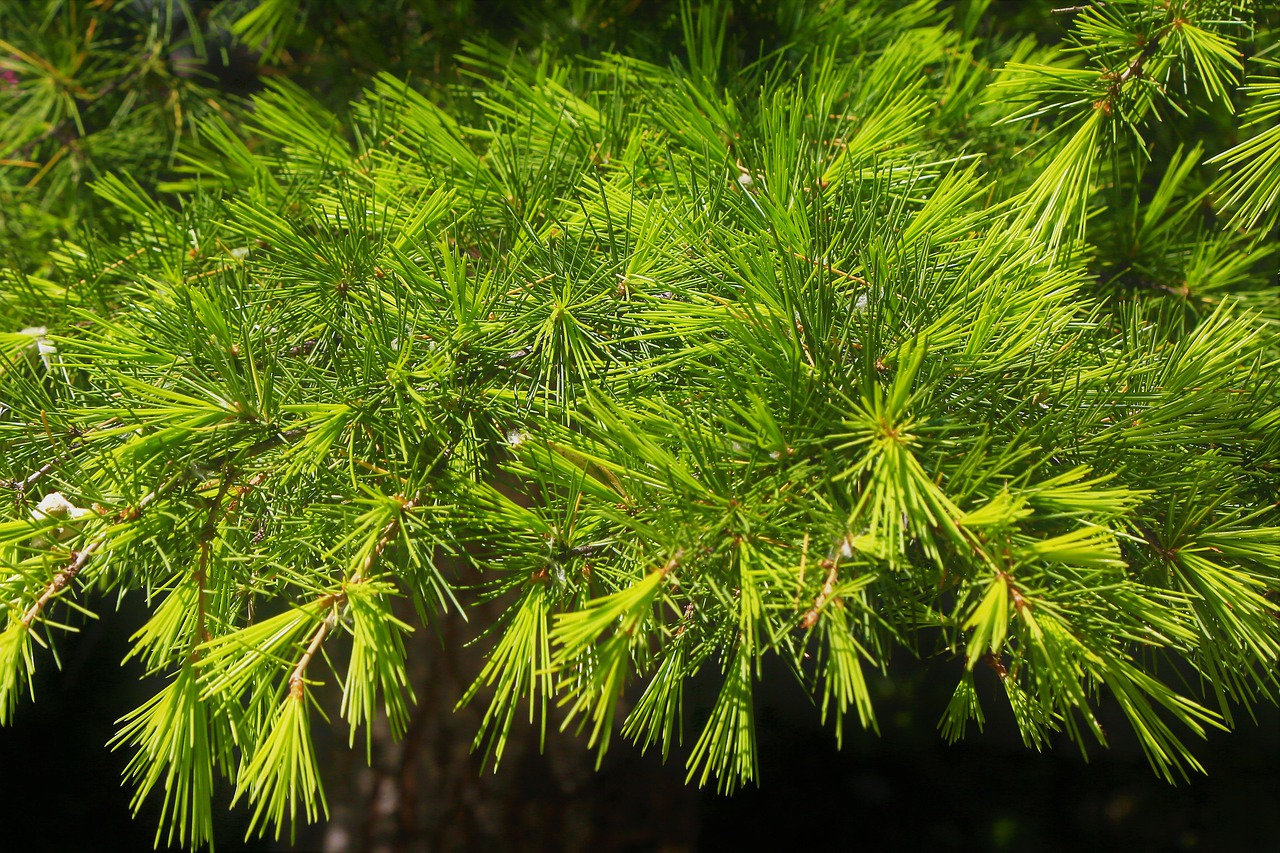One of my favourite winter drinks is a pine needle tea that we like to forage and simmer on the stovetop. The last few months, pine needle tea has shot up in popularity. Many people want to try it but aren’t sure what type of pine they are looking for and how to prepare it. I am going to share with you what type of pine I like to forage, some foraging tips, a little bit about the pine tree (to strengthen our connection to pine) and my favourite pine needle tea recipe.
What Type of Pine?
First the type of Pine that I forage is the Eastern White Pine (Pinus Strobus). This pine tree grows all over the place here in Southern Ontario (in fact it is the Provincial Tree of Ontario). The needles of this tree are easily identifiable by their long sweepy/broom like look as well as their signature “grouping of 5”. You will see when you look closely that there is a cluster of 5 needles together (sometimes this varies but majority of the time it will be 5).
How to Forage
The best time to forage for pine is after there has been lots of wind. Often you will find branches that have broken off – these are gifts to us. If there are no fallen branches then the next step is to ask for permission to take some needles. This isn’t a literal act, but one done with our heart. We can feel and sense if it is ok to take from a plant. Most plants want to share with us and are delighted for us to use them – but there are times that a plant doesn’t want to and if we ask we will feel that. I have had plants say no but there has always been a reason. Foraging should always be done respectfully, taking only what you need – never take everything and if you are given an abundant amount, always gift some to someone. When you are done, thank the plant and leave a gift (some dried herbs – I like to carry some herbs I grew and dried from my garden, a strand of hair, a song, a heartfelt thank-you, etc.). Always be sure that you are 100% confident that what you are foraging is the correct plant – if you are not sure, ask someone that is familiar with identifying plants or use a plant app. I like to search online for additional information and pictures of the plant I am foraging – you can find additional information about identifying the Eastern White Pine here.
A little Bit About Eastern White Pine
If you are looking to strengthen your connection to plants and the natural world (this strengthens our health since we are part of this world) then it is a really helpful practice to learn a little bit about the plant you are working with. If you use any kind of plant for healing or health purposes such as an essential oil, homeopathic remedy, tea, spices, etc. – take time to look up the  plant and see what it looks like and learn a few things about it. So back to our Pinus Strobus……when the settlers came to North America, the Pine was a mighty tree that covered the landscapes. The settlers were met by clouds of yellow dust from all of the pollen, which scared many as they approached this very hazy looking land. The settlers found pine to be a favourite tree for harvesting for its wood. This is because the trees could be cut down but did not require to be milled right away like other trees such as oak and maple. This meant that Pine became over harvested and we are left with about 1% of the existing population of Pine trees from the 18th century. These trees would tower over many other trees, providing shelter for many forest birds and mammals. Mature trees can be 200-250 years old and sometimes older. We often see the younger trees in our neighbourhoods, so I like to take a moment to think about how large and abundant these trees were when I humbly ask for some pine needles. Another important thing about Pine trees is that when there is a forest fire, the mature Pines are somewhat resistant to fire so the mature survivors of a forest fire are able to re-seed burned areas. It really makes you think why preservation of older trees is so important and that they are not replaceable by the simple act of planting a new tree. The Eastern White Pine is also known as the “Tree of Peace” and the grouping of 5 needles that I mentioned above plays an important role in this. This is the legend of the Tree of Peace and some additional information.
plant and see what it looks like and learn a few things about it. So back to our Pinus Strobus……when the settlers came to North America, the Pine was a mighty tree that covered the landscapes. The settlers were met by clouds of yellow dust from all of the pollen, which scared many as they approached this very hazy looking land. The settlers found pine to be a favourite tree for harvesting for its wood. This is because the trees could be cut down but did not require to be milled right away like other trees such as oak and maple. This meant that Pine became over harvested and we are left with about 1% of the existing population of Pine trees from the 18th century. These trees would tower over many other trees, providing shelter for many forest birds and mammals. Mature trees can be 200-250 years old and sometimes older. We often see the younger trees in our neighbourhoods, so I like to take a moment to think about how large and abundant these trees were when I humbly ask for some pine needles. Another important thing about Pine trees is that when there is a forest fire, the mature Pines are somewhat resistant to fire so the mature survivors of a forest fire are able to re-seed burned areas. It really makes you think why preservation of older trees is so important and that they are not replaceable by the simple act of planting a new tree. The Eastern White Pine is also known as the “Tree of Peace” and the grouping of 5 needles that I mentioned above plays an important role in this. This is the legend of the Tree of Peace and some additional information.
Pine Needle Tea
Pine needle’s are super nutritive, they are loaded with vitamin C and A. They also contain B vitamins, calcium, iron, phosphorous, potassium and sodium. Pine needles contain five times as much vitamin C as a lemon. Pine needles can be picked and chewed on while walking (spit out the pulp). One of the most enjoyable ways to enjoy pine needles is as a tea. While you can prepare it with just pine needles and water, I love the addition of apples and cinnamon to make this a warming and delicious tea. When using hardier ingredients such as needles, you want to make a decoction – or simmer it on the stove in order to get the most nutrients from it. You also want to keep the heat low so you preserve the as much vitamin C as you can.
Ingredients:
Handful of Eastern White Pine Needles (you can adjust amount according to taste after making this)
One apple chopped
Cinnamon stick (or a few pinches of ground cinnamon)
Water (I usually do 4-6 cups)
Add all ingredients to a pot on the stove and cover, bring to a gentle boil and turn right down to simmer. Simmer at least 20 minutes or up to an hour (covered). Strain and enjoy. You can add a little bit of honey after you strain it, eat the apples and wash off the cinnamon sticks and allow them to air dry completely then store them to use again and again. Leftovers can be stored in the fridge and enjoyed cold or warmed up on the stove. I compost my used pine needles or gift them to plants growing in my yard. You can also make this tea in your crockpot on the warm setting and let it sit for an hour or all day – this would be nice to put on before heading out in the cold so you return to a delicious smelling home and tea ready to warm you up.
I hope you enjoyed learning a little bit about Pine today and enjoy a few cups of pine needle tea this winter. Check out my Herbal Shop for herbal teas, salves and other herbal products to help you on your health journey.
~Angie


